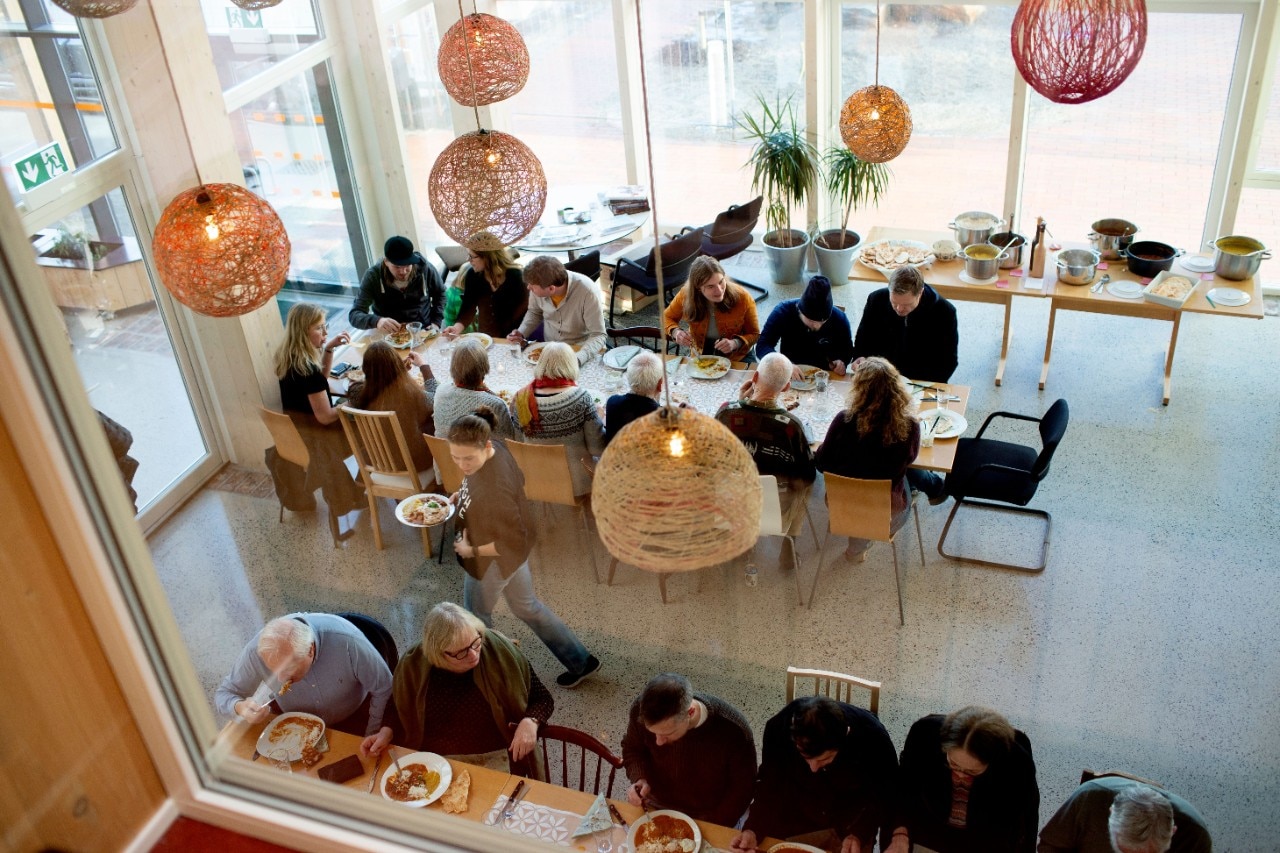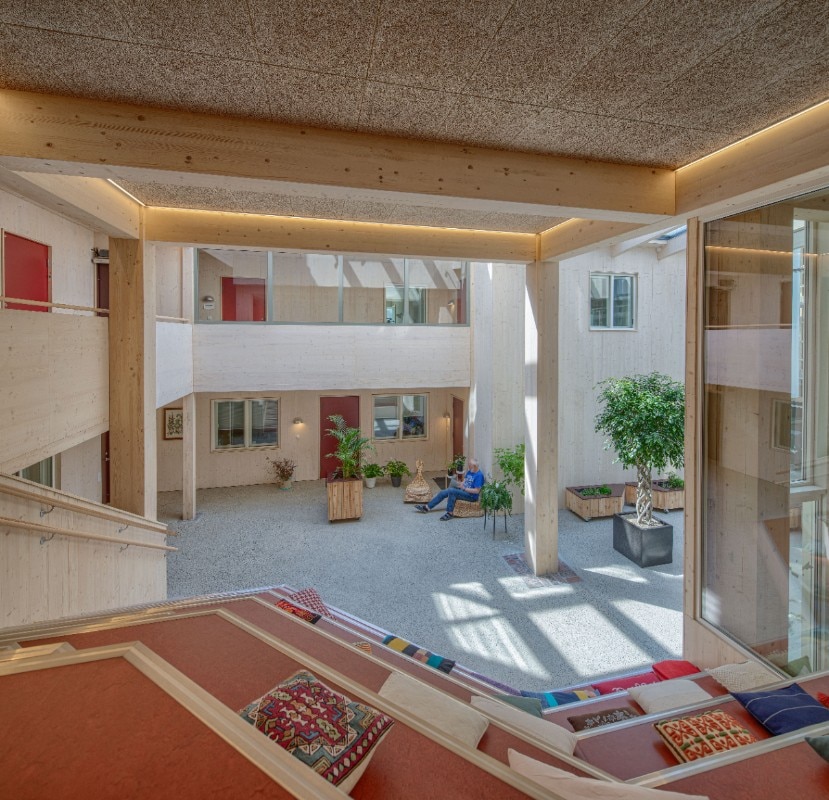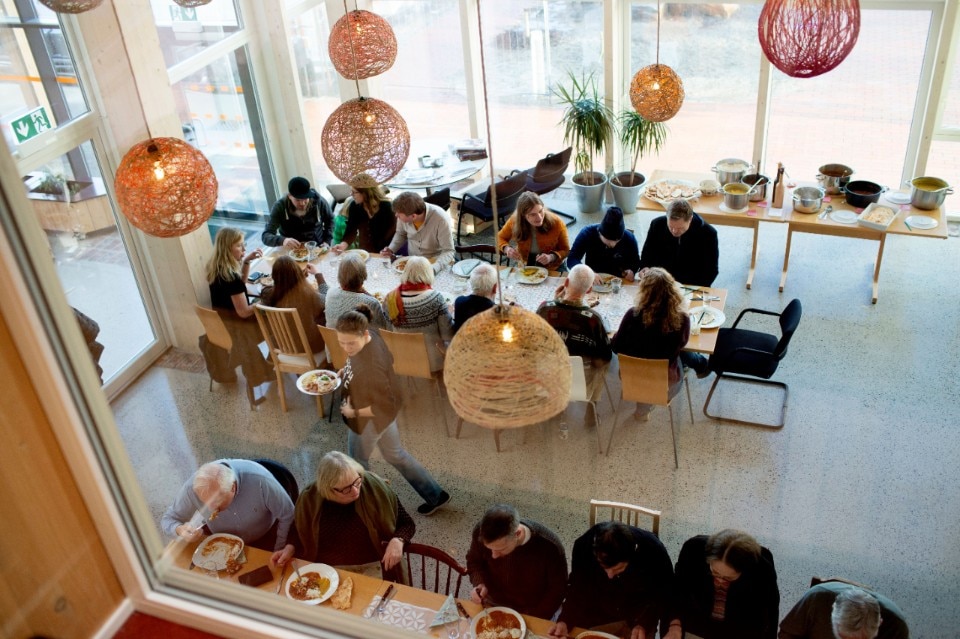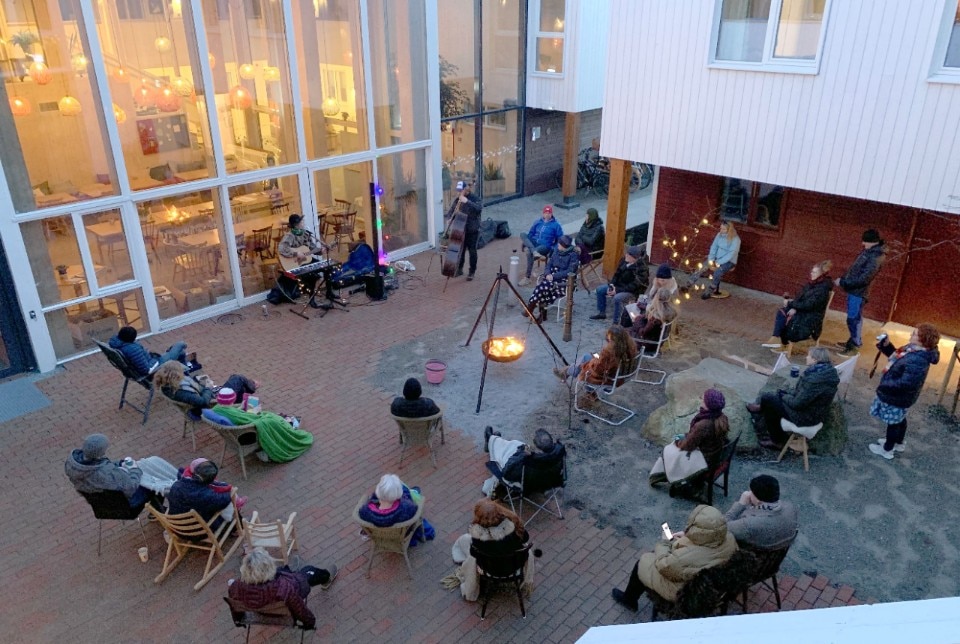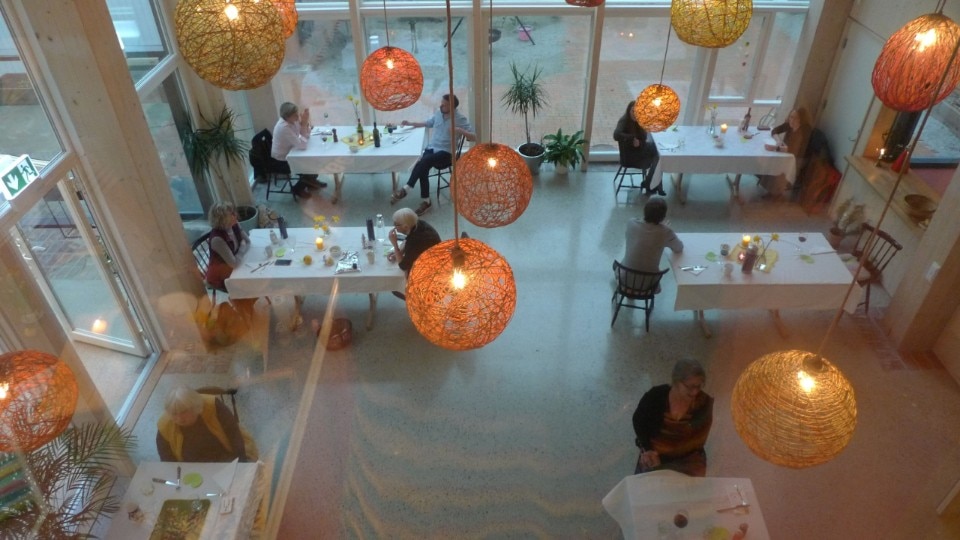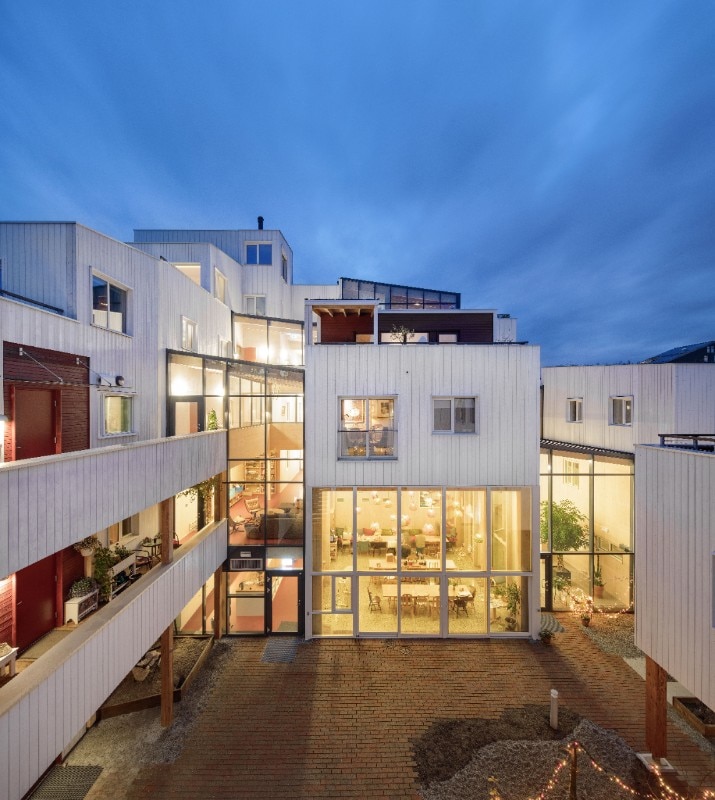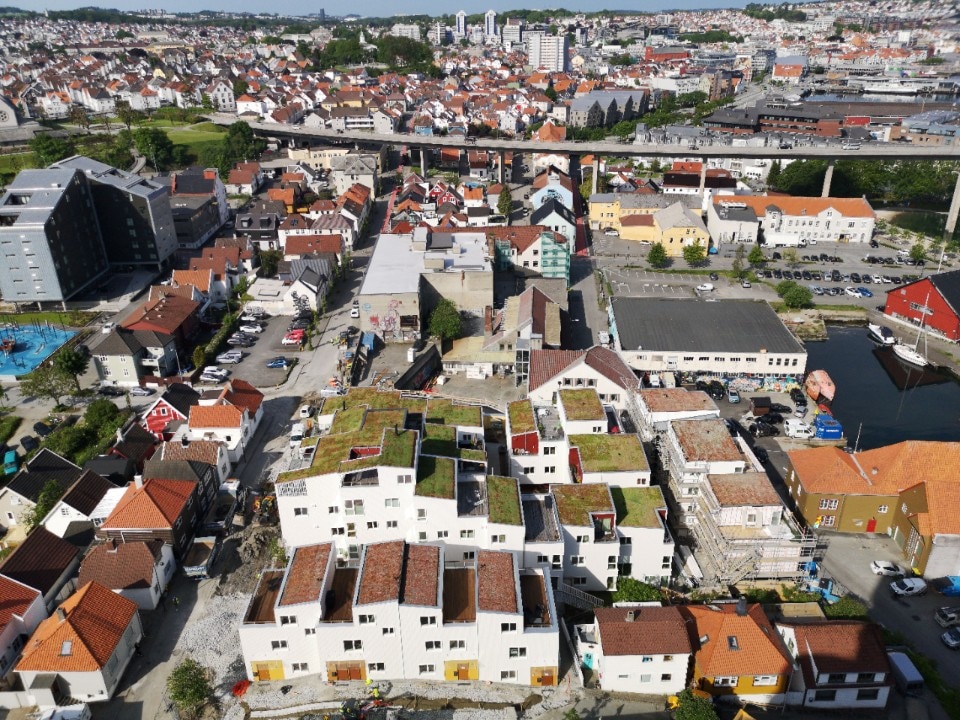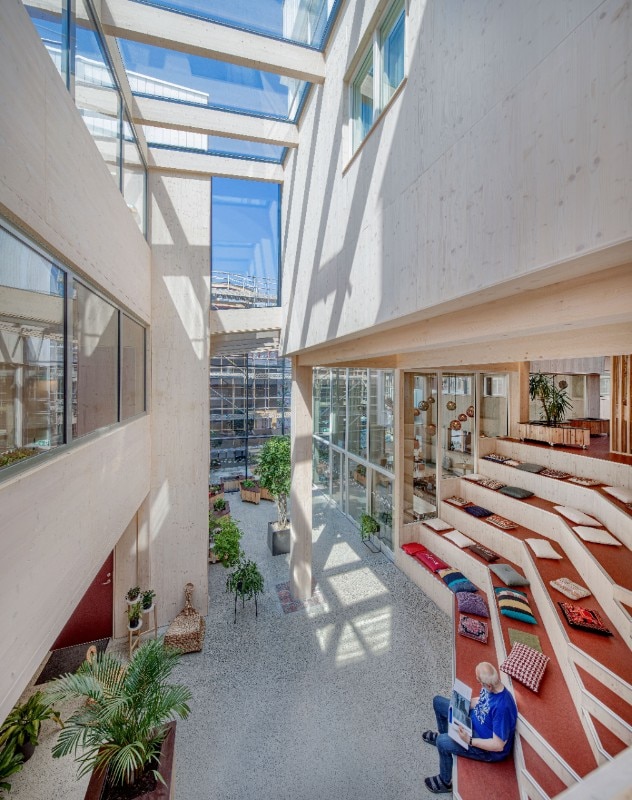“The pandemic has made our challenges become more obvious and urgent, meaning how to transform our steadily growing cities into healthy, thriving, ecological communities,” says Siv Helene Stangeland, co-founder of the Norwegian office Helen & Hard. She thinks much can be done by adjusting the way we build and organise our houses, seeing that our needs are not really being met, either as individuals or as a wider society. This leads to segregation, loneliness, health issues and over-consumption.
“We tend to think that the boundary of our home stops at the entrance, and forget that our houses are part of larger spatial networks and infrastructures – flows of matter and energy, air, water, waste and other supply chains,” she says.
The effects of the pandemic on the daily dynamics in our homes and public spaces are evident. We have lived in different ways than before, as well as more intensely. At home, we spent more time playing with our children, working, cooking because the restaurants were closed. Then we spent more time in local parks, squares, playgrounds, even exercising more since the gyms were closed. We stopped travelling and also stopped gathering in public, in any case there are fewer people attending public events now. It is still too early to know how many of these changes will withstand the 'new normal', or in what proportion, but they are all indicators to think about.
We have become more local and more aware of all we need to share. The qualities or insufficiencies of the spaces and materials that surrounds us are becoming much more evident,” Stangeland sums up. “I do hope we can deal with more holistic environmental approaches and provide change in measures of quality and capacity and not only in measures of regulations and security. If the latter is determining our coming cities development, I am afraid we will not necessarily thrive. What we need is to build infrastructures and architectures which can support communities of care and thrust also functioning in pandemic periods.”
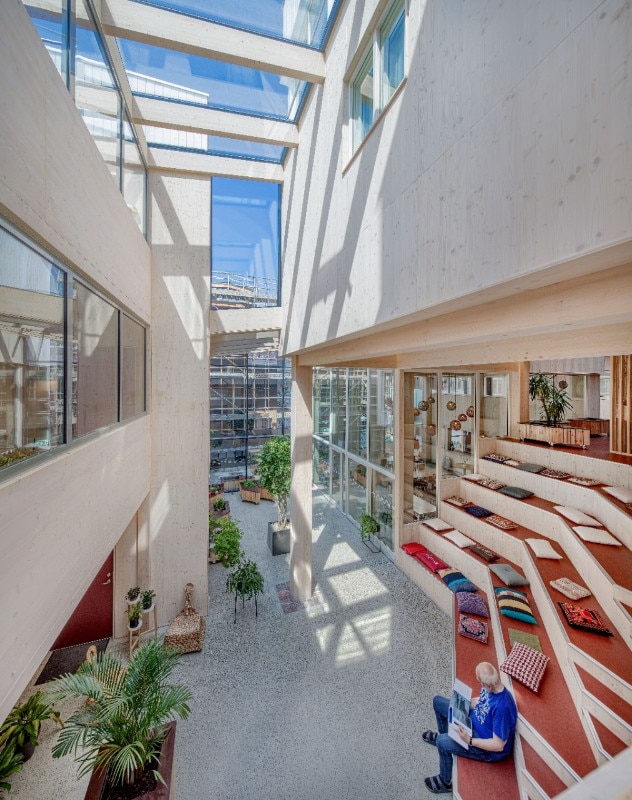
The pandemic has made us better understand what our homes and neighbourhoods should offer, and the importance of redesigning urban spaces. “It has also become clear that we cannot rely only on real estate developers to provide these qualities; they must become a major political demand.” In order to solicit politicians and urge them to act, the awareness of the citizens must be raised on a broad scale. Stangeland is moderately optimistic.
“On a city level, we see brave ethic projects that make fertile ground for smaller, bottom-up initiatives. Amsterdam for example has decided to test the ‘doughnut economics’ model devised by Kate Raworth, which sets very precise ethic frameworks for social and environmental city development. The project Grobund in Denmark is a fresh and radical community project. Occupying a large former industrial plot, 100 inhabitants seek to make a sustainable self-sufficient living without needing to lend money from a bank to start up. We experience that more and more companies and clients are expecting their projects to fulfil the UN Sustainable Development Goals. Projects that introduce sustainable changes on systemic levels are important, like supporting local value chains, resources and producers, or providing do-it-yourself workshops. Building with timber instead of concrete and steel is another sustainable change.”
We have become more local and more aware of all we need to share. The qualities or insufficiencies of the spaces and materials that surrounds us are becoming much more evident.
The way we live can be updated, too. At the Nordic countries’ pavilion, curated by Martin Braathen from the National Museum Norway, co-housing is the theme, exemplified by the project Vindmøllebakken built by Helen & Hard in Stavanger, Norway, where residents have fully-equipped apartments with many shared facilities and spaces. Facilitating a “vibrant local democracy”, the project focuses on the role of visible and invisible architecture in creating a community based on sharing and socially sustainable life practices. “In Venice, we develop the idea of communal living in order to answer the question. Can we transfer more aspects of our lives from inside the apartment to a semi-public space? The pandemic era we experience challenges these ideas. Thus, models for housing which can help us socialize safely, build communities of care and social trust and not let distancing and isolation become the only answer are very much needed. And how can architecture and design support this? The Biennale project is based on a commercial housing model, introducing a new interface between apartments and communal space – the semi-private sharing zone. It is based on collaborative processes and close dialogue between architects and residents, implementing a sustainable, innovative, open-source solid-timber construction system.”
In Nordic countries, the history of co-housing began in the Seventies and ranges between various extremes: from large, rationally organised communes to small, poetic cohabitation projects; from religiously or politically motivated utopias to the pre-War family hotels (which supported the liberation of women) and radical alternatives to existing societal norms. Which is the situation nowadays? “Today we are seeing other motivations behind the interest, environmental, economic or social. There is a new generation for whom sharing is completely normal,” says Stangeland. These are good premises for this model to develop and take hold. Of course, architecture plays a crucial role in this possible evolution. “I think architecture is seen far too much as an economical investment, while it should be seen as an investment into our common goods. It should nurture the singular and unique potential of a place and its inhabitants: include people, local resources and the physical environment at hand; provide the necessary social, environmental healing and transformation; invite us to meet and find meaning collectively; inspire us to contemplate and value nature and move us with beauty.
Siv Helene Stangeland (Stavanger, Norway, 1966) studied architecture is Oslo with Sverre Fehn (who designed the Nordic pavilion in Venice) and Christian Norberg-Schulz. She and Reinhard Kropf founded Helen & Hard in 1996 in Stavanger.


